Happy St. Patrick’s Day!!
Irish Quilting and Needlework – What better to feature in a Sewing Blog on St. Patrick’s day than a little trivia on Irish quilting and other needle arts. Make sure to look for this week’s Blog Readers only coupon, too. Also see the section on St. Patrick’s Day trivia!
Make sure to check out our selection of classes on our calendar page.
Irish Quilting Trivia
- Quilting was introduced to Ireland by their country folk who had emigrated to the United States in the 18th and 19th centuries.
- Wool was the most abundant cloth produced in Ireland, with Linen coming in second.
- Most of us really don’t think about it, but, prior to the Industrial Revolution, cotton and silk were scarce in Ireland. Thus, it was commonplace for the Irish immigrants to send back small pieces of cloth with patchwork patterns to their family still in Ireland.
- Since fabric was expensive and hard to come by, quilts were often made from worn out clothing or bed linens.
- In the young United States, patchwork quilting was born out of necessity rather than luxury due to the lack of wool. However, in Ireland it was more a luxury than a necessity as the Irish had plenty of wool.
- Quilting was a noted pastime for English gentry, the wealthier English, in the late 1800’s. The upper class women would enlist the household staff to help piece the quilt. Many of the English gentry maintained summer homes in Ireland, thus bringing quilt piecing skills to Ireland.
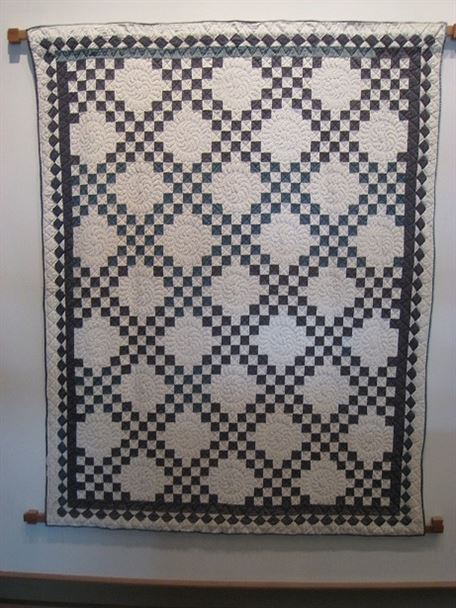
Irish Chain Quilt
- The most recognized pattern in Irish quilting is the Irish Chain pattern. It actually originated in America!
- The Irish Chain quilt pattern dates back to the late 1700’s.
- Was first designed and created in America, not Ireland.
- It is one of the earliest organized repeated patchwork designs in America.
- Irish Chain is really the name of a tool that was used for linear measure in land surveying.
- Irish Chain has 3 common variations: The Irish Chain, Double Irish Chain, and Triple Irish Chain.
- Many early Irish Chain quilts made in Ireland are red and white with red “chains” and white centers.
Bonus Coupon
[coupon couponid=”11318″ coupon_align=”cctor_alignnone” name=”St. Patrick’s Day”]
Irish Lace and Crochet
Irish lace is more famous than Irish quilting. The art of lace making was born out of a need for income rather than a desire for adornment. Most Irish families did not own the land they occupied. Rather, they were crofters, tenants to a Lord or other English gentry. And they were poor. As the high society matrons began embellishing their clothing in the 1700’s, a need for a domestic lace developed. French lace was in such high demand and had to be imported, it was considered too expensive for English gentry. So the English high society woman began searching for a more local lace that equaled the much desired French lace a an affordable cost.
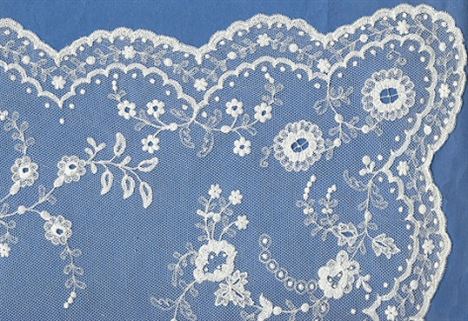
- Irish Lace and Irish Crochet may refer to the same product but there can be differences.
- Limerick Lace is lace made using hand embroidery stitches on netting. Crochet Lace is created using a crochet hook and a very fine thread to make motifs and sections. The motifs and sections are then joined to create yardage of lace.
- Carrickmacross Lace is similar to Limerick Lace. However, Carrickmacross entails using muslin and netting.
- Irish crochet lace patterns were considered so valuable that they were seldom written down. Rather, they were passed on from one generation to the next by a mother showing a daughter, etc.
- With the Industrial Revolution, handmade lace ceased as the machines could turn out hundreds of yards a day instead of one yard by hand taking over a week to complete!
- Traditional Irish crochet lace is considered a lost art because the patterns were not recorded anywhere and are almost impossible to duplicate today.
- Irish Lace was also made in a traditional Venice petit point method where fabric, heavy thread, a button hole stitch and long needle were used.
- Irish lace was a cottage industry until the Industrial Revolution mechanized lace making.
- During the potato famine, Irish Lace is credited with providing income to buy food for many Irish families.
- Ursaline nuns opened crochet schools in their convents during the potato famine to teach the Irish women and girls how to make lace that resembled Venetian lace.
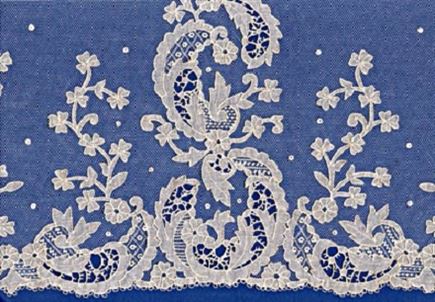
Irish Embroidery
Irish embroidery is another less known needle art from the emerald isle. Yet, as with lace, it was developed out of a need for income and demand for a decorative product by wealthy English gentry. Mountmellick embroidery is the most famous of unique Irish embroidery. Unlike lace, the Mountmellick embroidery has been continually practiced since the early 1800’s.
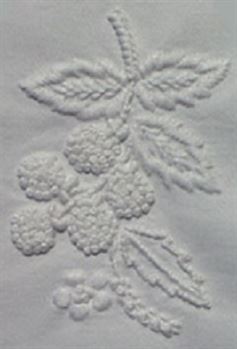
- Mountmellick embroidery is “white on white” – heavy white thread and heavy white base fabric.
- Joanna Carter is credited with creating Mountmellick embroidery. It is thought to have been inspired by candlewicking.
- Mountmellick embroidery uses a multitude of traditional embroidery stitches, unlike candlewicking which only using French knots.
- Note that Mounmellick pieces have a unique fringed edging. Without this fringed edging, it isn’t considered Mountmellick embroidery.
- Hand embroidery ceased being a way to earn and income and became a pastime in the late 1800’s, during the Victorian era.
- Mountmellick embroidery designs are taken from nature and are nature themed. Leaves, flowers, berries, trees, and grasses are common in Mountmellick embroidery.
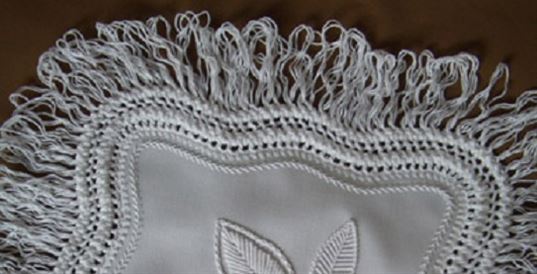
St. Patrick’s Day Trivia
- St. Patrick’s given name at birth is Maewyn Succat – very different from Patrick! He took the name Patrick when he was ordained a priest.
- St. Patrick lived during the 5th century.
- The first St. Patrick’s Day parade in America was held in New York City in 1762!
- Savannah, Georgia has held one of the largest St. Patrick’s Day celebrations in the United States since 1813!
- Approximately 35 million Americans lay claim to Irish ancestry.
- It’s reported that about 14 million pints of Guinness are consumed WORLDWIDE on St. Patrick’s Day.
- More than 80% of us wear something green on St. Patrick’s Day.
- The shamrock was actually a teaching tool used by St. Patrick to explain the Holy Trinity.
- The word “leprechaun” means mischievous fairy or sprite.
- Prior to the 20th Century, Leprechauns were depicted and described as wearing red, not green.
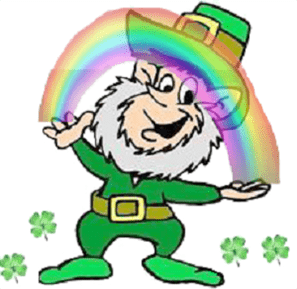
St. Patrick’s Day Sale at Rocky Mountain Sewing
Rocky Mountain Sewing is celebrating St. Patrick’s Day in a Big Way.

Rocky Mountain Sewing offers technique and project classes as well as FREE machine usage classes – no matter where you purchased your machine. Classes are offered at all Rocky Mountain Sewing Locations.
Please let us know how we are doing. Leave a comment or ask a question a the bottom of this page. We will answer you!! If you would like us to offer something, then please TELL us.
We want Rocky Mountain Sewing to be your Sewing Headquarters!
Try creating your own Irish embroidery using one of the many free-standing embroidery designs available today!
